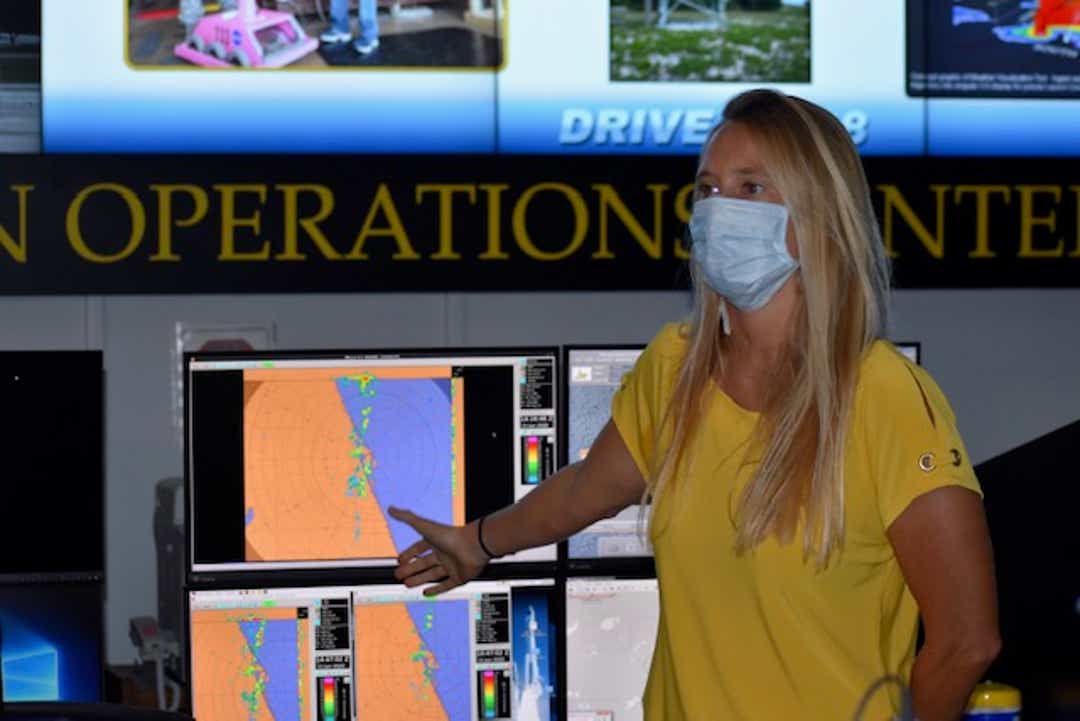WASHINGTON — Earth-observation company BlackSky will launch two satellites as co-passengers on a SpaceX Starlink mission expected to occur June 24, Nick Merski, vice president of space operations for Spaceflight Industries, told SpaceNews.
Spaceflight’s rideshare business Spaceflight Inc. is arranging the launches for BlackSky, said Merski, who is responsible for supporting BlackSky and formerly directed the BlackSky constellation program.
After the SpaceX rideshare, BlackSky has another four satellites booked to launch on India’s new Small Satellite Launch Vehicle this year, though delays with that program have made a launch date unclear, Merski said.
BlackSky has four satellites in orbit from launches in 2018 and 2019 that were built in-house by Spaceflight Industries. The company hopes to have 16 satellites in low Earth orbit by early 2021.
LeoStella, a joint venture of Spaceflight Industries and Thales Alenia Space, is building 20 satellites under a contract with BlackSky, some of which will replace older satellites to maintain a 16-satellite constellation, Merski said.
Merski said the LeoStella-built satellites feature improvements in manufacturability, a rapidly commissionable imaging payload and steam-powered propulsion units from Bradford Space. Each satellite weighs 55 kilograms and is designed for a three-year service life, he said.
BlackSky, through Spaceflight Inc., is still arranging launches for another six satellites it hopes to have in orbit in less than a year. Merski said launch opportunities have become more numerous for smallsat operators, making later launch contracts more manageable.
“The market is changing so you don’t have to book all these launches 24 months in advance,” he said. “We’ve got plans laid in place in pretty advanced negotiations with a couple different providers.”
BlackSky is late on its LeoStella payments, according to Intelsat, which loaned BlackSky $50 million last year. Merski declined to say when BlackSky will catch up on payments, but said LeoStella is continuing to build its satellites.
BlackSky has a long-term goal of operating a 60-satellite constellation. Merski said the company will pursue that number based on market demand for its optical imagery. With 16 satellites, BlackSky can provide 1-meter resolution imagery with hourly revisit times for most major cities, he said. A constellation of 60 satellites would shorten revisit times to 10 to 15 minutes, and sharpen resolution to under one meter, he said.
BlackSky has a ground network of six gateway stations, one the company built and five it uses through leases, some of which BlackSky installed equipment at, Merski said. By mid-2022, BlackSky anticipates having 10 gateway stations through a mix of partnerships and fully-owned stations, he said.
Quelle: SN
----
Update: 10.06.2020
.
Weather looks good for SpaceX Starlink launch from Cape Canaveral
Weather conditions around Cape Canaveral Air Force Station should be favorable for this week's launch of a SpaceX Falcon 9 rocket with yet another batch of Starlink internet satellites, the Space Force said Tuesday.
If teams hold to the Friday launch time slated for 5:42 a.m., weather at Launch Complex 40 should be about 80% "go" for the attempt.
"The onshore flow may bring a few overnight and early morning showers to the vicinity during the primary launch window Friday morning, however overall favorable conditions are expected," the 45th Weather Squadron said. "The primary weather concern for launch day will be passing cumulus clouds in the onshore flow."
In the event of a delay to Saturday, forecasters said conditions would remain the same at 80% "go."
Friday's flight will mark the ninth mission – and 540 satellites – for Starlink, the company's effort to deliver broadband internet service from low-Earth orbit. Though SpaceX plans to have thousands of the spacecraft flying above to provide even worldwide coverage, CEO Elon Musk previously said North American services can start with far fewer. Packages for military, remote, and underserved customers could be offered as soon as late this year.
Though teams just launched a Starlink mission from the same pad last week, SpaceX will need to continue maintaining a swift cadence to reach its mega-constellation goals. At least one more Starlink launch is planned for late June, followed by several this summer.
Launch Friday
- Rocket: SpaceX Falcon 9
- Mission: 60 Starlink satellites
- Launch Time: 5:42 a.m.
- Launch Complex: 40 at Cape Canaveral Air Force Station
- Landing: Drone ship
Follow live updates and video at floridatoday.com/space starting at 4:30 a.m. Friday.
Quelle: Florida Today
----
Update: 11.06.2020
.
SpaceX set to continue rapid launch cadence with Starlink mission this week
Update, Thursday: SpaceX is now targeting 5:21 a.m. Saturday, June 13, for this launch. The story below has been updated to reflect the new launch window.
If schedules hold, a SpaceX Falcon 9 rocket will lift off from Cape Canaveral Air Force Station early Saturday, supporting the company's rapid cadence of launching roughly once a week this month.
The 230-foot rocket is slated to take 60 Starlink internet satellites to low-Earth orbit at 5:21 a.m., a window that could see its exhaust plume light up over the Atlantic Ocean as twilight lingers above the horizon. The Of Course I Still Love You drone ship will host a booster landing about eight minutes after liftoff.
As of Wednesday afternoon, weather for the attempt stood at 80% "go," according to the Space Force's locally based 45th Weather Squadron. The only noted concern was the possible presence of cumulus clouds around the Cape.
Also as of Wednesday, teams had not yet raised the rocket into its vertical position at Launch Complex 40, indicating that rumors of SpaceX skipping a test fire for this mission could be true. The company typically performs a test fire of the rocket's nine Merlin main engines before every launch.
Because Starlink missions use previously flown boosters and are internal – meaning SpaceX launches its own satellites on its own rockets – skipping test fires to save on time and cost could become commonplace.
After Saturday, meanwhile, the company still has two more flights on the Eastern Range's June schedule: yet another Starlink mission on June 22, this time from Kennedy Space Center's pad 39A; and the critical launch of an Air Force Global Positioning System satellite from Launch Complex 40 on June 30. Both will fly on Falcon 9 rockets and include booster recoveries.
Also counting a previous Starlink launch on June 3, SpaceX's cadence this month is expected to hit once a week. With nine launches already in the books this year, the company is poised to hit the much-vaunted goal of 24 missions in 2020.
Including United Launch Alliance's Atlas V rocket, the Space Coast could see close to 30 overall.
If successful, Saturday's ninth launch under the Starlink banner will boost the constellation's size to 540 satellites in low-Earth orbit. The company hopes to start offering broadband internet services to underserved and remote users in North America sometime later this year.
Contact Emre Kelly at aekelly@floridatoday.com. Follow him on Twitter, Facebook and Instagram at @EmreKelly. Support space journalism by subscribing at floridatoday.com/specialoffer/.
Launch Saturday
- Rocket: SpaceX Falcon 9
- Mission: 60 Starlink satellites
- Launch Time: 5:21 a.m.
- Launch Complex: 40 at Cape Canaveral Air Force Station
- Landing: Drone ship
Follow live updates and video at floridatoday.com/space starting at 4 a.m. Saturday.
Quelle: Florida Today
----
Update: 12.06.2020
.
Meet the first all-female Air Force launch weather team who will work SpaceX Starlink launch
When SpaceX launches its ninth batch of Starlink communications satellites early Saturday morning, there will be a group of weather officers on the ground making sure everything is good to go for launch, just like for every launch from the Space Coast.
But for the first time, the weather officers from the 45th Space Wing Weather Squadron working this launch are all women.
"Our flight commander, Capt. Fontenot, he put together the crew and was like, 'Wow, all of these launch weather officers and all of these personnel are female. Wouldn't this make a great story?' And I was like, 'yes!,'" Launch Weather Director Capt. Nancy Zimmerman told reporters Thursday morning at the Cape Canaveral Air Force Station's Morrell Operations Center.
Operating since the early 1990s, the weather squadron at the 45th Space Wing, which is composed of both active-duty military members and civilians, had been primarily made up of men. But over the years, more women have joined the ranks.
There are currently 47 members in the weather squadron, 11 of which are women. In the launch weather team, there are 17 qualified members, of which eight are women.
For Saturday's launch, which is forecasted at 70% "go," according to the 45th Weather Squadron and is scheduled to liftoff at 5:21 a.m. from Cape Canaveral Air Force Station Launch Complex 40, there will be six main weather positions manning the launch.
Maj. Emily Graves will be the Launch Weather Commander, meaning she will give the final "go" for launch if all weather conditions have cleared.
Zimmerman will be the Launch Weather Director who will oversee the entire team on launch day.
Arlena Moses will be the lead launch weather officer, the person assigned to that particular launch vehicle and who has been coordinating with the launch customer, in this case, SpaceX, for weeks leading up to the launch. Moses also is the one who provides the daily forecasts for launch day.
"I always wanted to be a meteorologist," Moses, who joined the weather squadron about six months ago said. "I dressed up for career days in elementary school as a TV meteorologist from the local channels ... I loved working for the National Weather Service but I've also always loved space and astronomy and anything related to that, so when this opportunity came up, of course, I took it."
Melody Lovin will be the Reconnaissance Launch Weather Officer, the person who looks at the data from the weather balloons and the 45th's weather aircraft.
Jessica Williams will be the Radar Launch Weather Officer who will assist Moses on launch day as well as analyzing the radar and lightning data.
According to Lovin and Williams, the radar launch weather position can be one of the busiest positions on launch day, especially if weather is bad.
"You get a new radar scan every three minutes so you have to look at the scan at a vertical level and a horizontal level. How far from the pad and the flight path are these clouds and how far from the pad and the flight path is the top of the cloud? How high is the top of the cloud? And then you're also monitoring the lightning sensors," Williams explained. "So every three minutes, you're doing something."
Airman 1st Class Hannah Mulcahey will be the additional weather forecaster for launch day.
Though the women will be operating in these specific roles for this launch, they are trained to fill any other role and are constantly being rotated for every launch.
"If you just think about how cool it is to say that I help launch rockets and I'm one of the people that if the conditions warrant, I can stop the launch," Moses said. "It's amazing in terms of both the responsibility and kind of just the cool factor that says I can stop launches."
Quelle: Florida Today
----
Update: 13.06.2020 / 8.00 MESZ
.



Quelle: SpaceX
+++
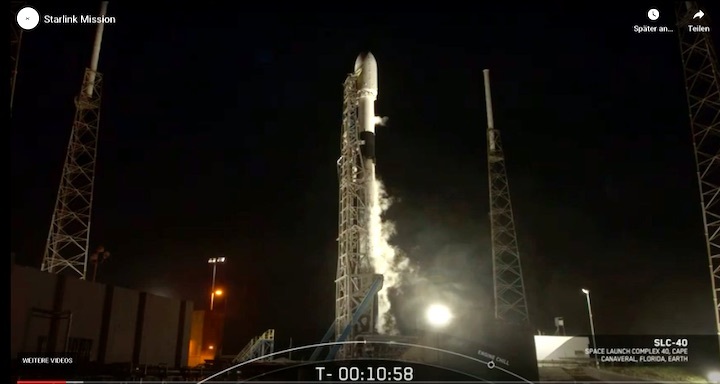

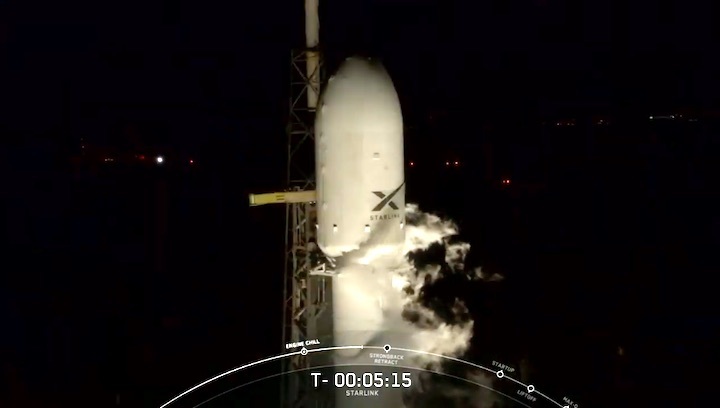
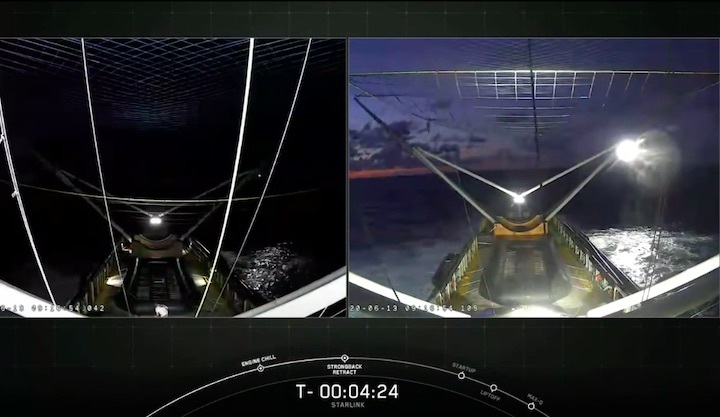
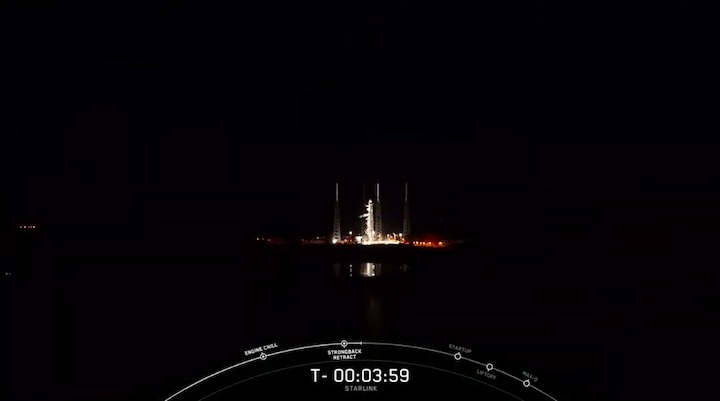

















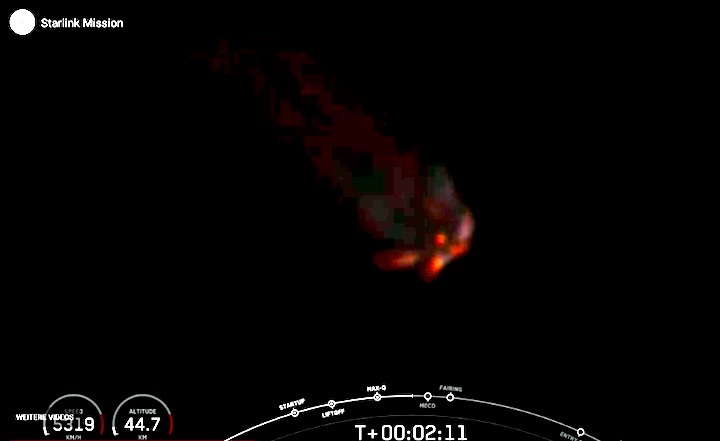

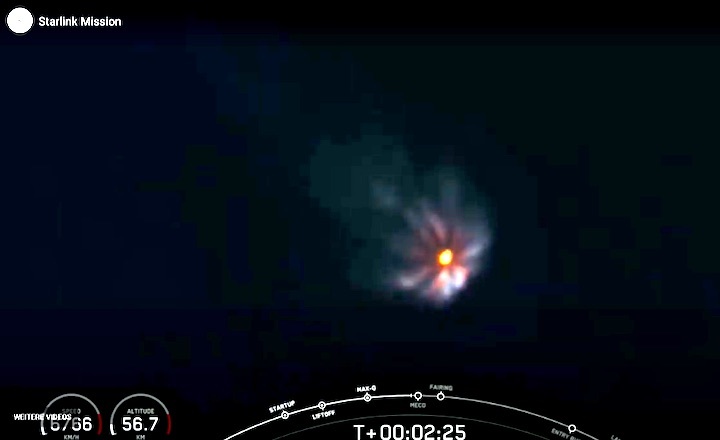




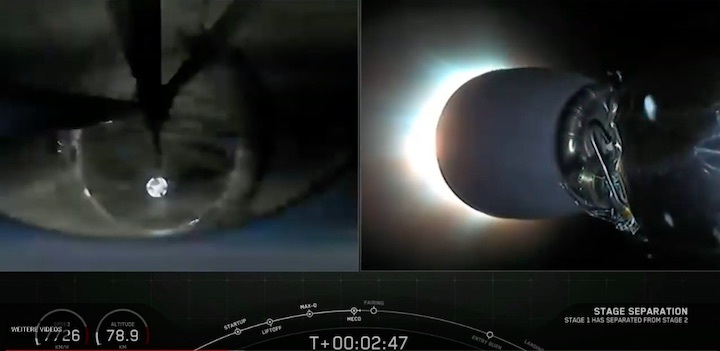








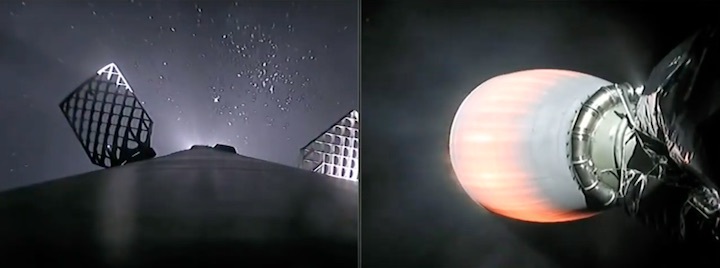



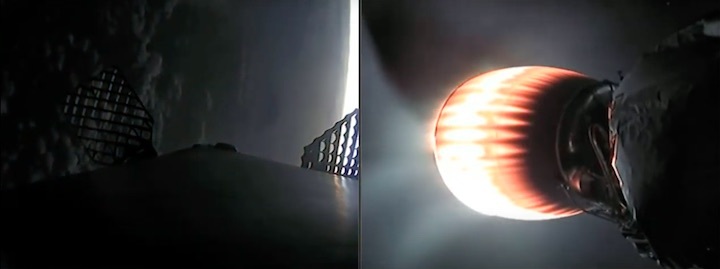







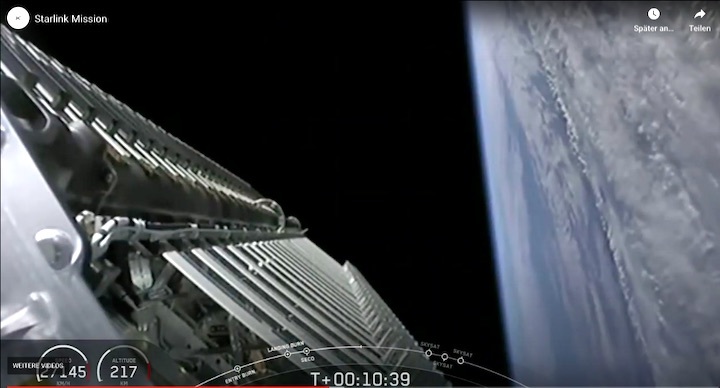


SkySat-Satelliten 16+17

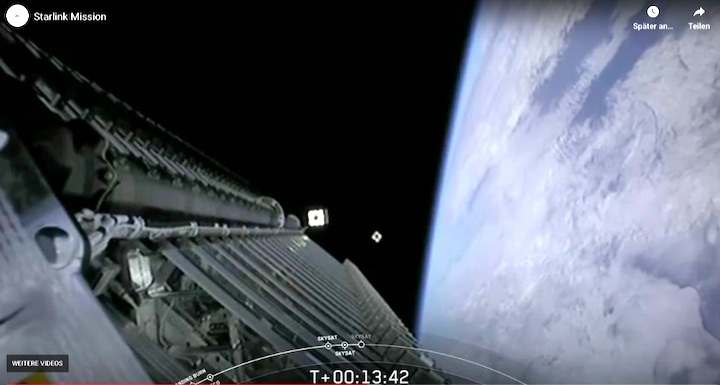




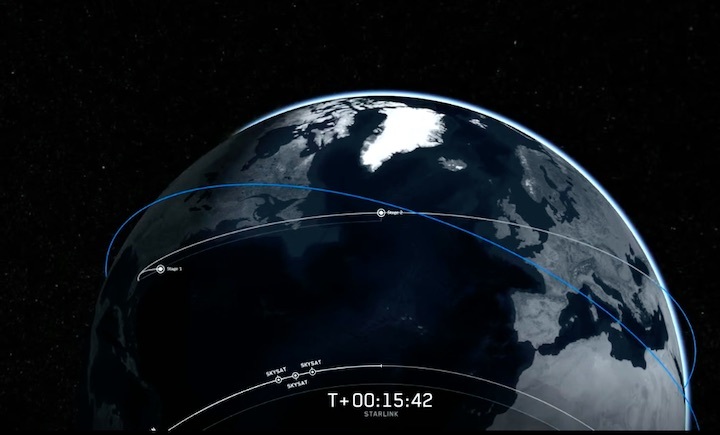


Quelle: SpaceX



